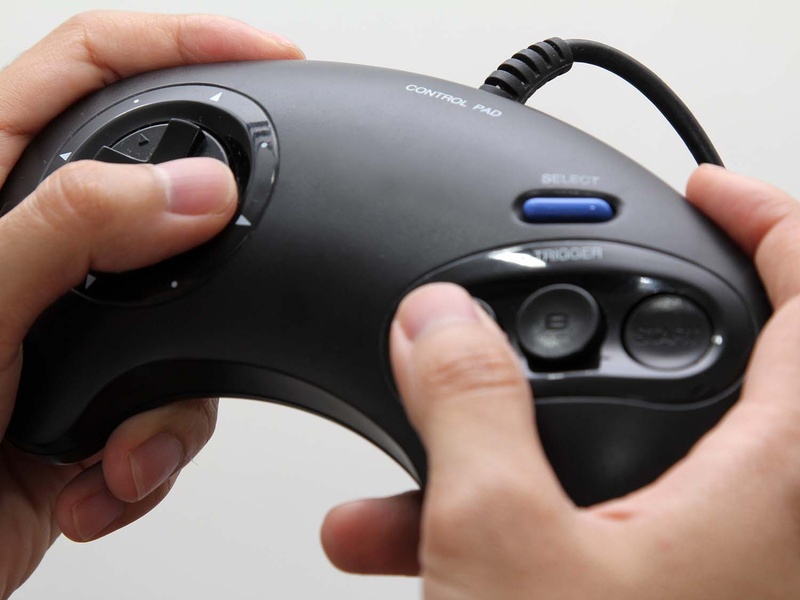The video game is an American invention, attributed to the German-born American engineer Ralph Baer (1922-2014). The Odyssey, considered the first console in history, was commercially launched in 1972. The novelty became extremely popular in the United States, especially with the leadership of Atari.
However, in 1983, the so-called “crash of the video game industry” occured. Basically, what happened was market saturation. Many companies launched their own consoles, game production was too large, and with almost no quality control, consumers became confused. Thus, the games industry began to decline.
After 1985, with the entry of Nintendo, the video game market began to recover and began to take shape in the way it is today. From the late ’80s, the industry’s center shifted from the US to Japan.
Games in Brazil
In Brazil, video games started to become really popular only from the ’90s. There were at least five regular magazines on the subject then. Leading manufacturers (Sega and Nintendo, both Japanese companies) had local representatives. There were also advertisements on TV. Traditional retailers began selling games—previously restricted to specialty stores.
At the time, the difference between the Japanese and American markets was much larger than today. Nintendo, for example, manufactured totally different models for each region. So there was the Nintendo Entertainment System (NES, American) and the Famicom (Family Computer, Japanese), and their respective successors, the Super NES and Super Famicom. Brazil followed the American standards.
“Japanese” game
Naturally, the Nikkei in Brazil had more opportunities to play games released only in Japan compared with non-descendants. Many families had relatives working in Japan during the dekasegi movement of the ’80s and ’90s. Eventually, they sent gifts; among them, there were also games.
Some were nearly identical to those sold in Brazil, such as the Super Mario and Sonic games. Others were quite different. Since many Nikkei could not read Japanese, some games were overlooked because it was very difficult to advance in the game. In most cases, they were RPGs (role playing games), a very famous genre in Japan, but took some time to become popular in the West. It is precisely this genre that most captivates the Brazilian Nikkei.
University professor André Oka, 37, Nisei, talks about his experience. “I started playing in the late ’80s, early ’90s. The games came from Japan through acquaintances and relatives.
“Japanese games gets to the sentimental, emotional side. They are deeper in this direction, in addition, demand a higher level of concentration. European and American games tend to be more geared to action and simulation, faster with less commitment fun.”
Kleber Ueti, a 32-year-old Sansei, had a similar story. “I played Japanese video games ever since one of my uncles brought the Famicom with a bag full of games. I must have been 10 years old,” he recalls.
Kleber, who works with game development, points out other differences of Japanese games. “We can identify differences in gameplay, the way to tell the story, and the virtues that heroes have in Japanese games also tend to be different from a Western hero. For example, Japanese heroes tend to value friendship, determination, respect, and dexterity, while Westerners focus more on strength, superpowers, and the ideal of superiority.”
Erika Honda, 30, systems analyst, Sansei, cites The Legend of Zelda: A Link to the Past, Chrono Trigger, and Final Fantasy VI among games that definitely made video games part of the life of a 10-year-old girl. “Japanese RPGs were largely to blame for my interest in video games [laughs],” she says.
“[Japanese video games] Always managed to arouse my curiosity and hold my attention. The proximity to the culture and my taste for cute things must have contributed. But I have always depended on localized versions of the Japanese game,” added Erika.
Difficult to play
Language is the main difficulty encountered by Nikkei in relation to Japanese video games. Even if one can read Japanese, some points are still problematic.
“Many Japanese games are based on the ancient history of the country, so it is common to use words that do not appear in daily life. This makes it a little more difficult,” says Denis Kimura, 31, Sansei, cultural advisor. In such cases, Denis uses dictionaries to find the proper meaning.
Kleber goes through a similar situation. “I can read a little Japanese. I have attended classes for a few years; I have the former 3-kyu Japanese Language Proficiency Test [Noryoku Shiken]. However, some games have some kanji I still do not understand. So there is difficulty to play.”
For Erika, video games are a motivation to return to study Japanese. “For those who have a preference for Japanese games and the ease of obtaining information about the games that only come out there, it’s frustrating not being able to play because of not knowing the language.”
Besides the language, a few years ago it was too hard to find Japanese games for sale in Sao Paulo, Brazil’s largest city. Currently, it is much easier to have access to them—without depending on friends and relatives.
Traveling to Japan nowadays is much easier, comfortable, and relatively cheaper than some years ago. Further clarification regarding the country itself also makes it inviting for Brazilian tourists, who can personally go buy their games if it is of their interest.
Today, there are legal means from overseas to acquire games released only in Japan. There are shops that sell and ship worldwide, and online stores that sell downloads of the digital content.
Jeronimo Kojo, 35, systems analyst, Nisei, has a good collection of Japanese games. “In the case of the PlayStation system, you can have a Japanese account or buy games on specialized sites,” he says. “Just have an international credit card. There are also some stores in Brazil that sell imported games,” adds Denis.
Buying a product from a country so far away makes the shipping expensive and time consuming. “I had to wait almost six months to receive the game Red Seed Profile,” says Denis. Currently, due to the exchange rate and shipping time, a Japanese game may cost an extra R$ 100 (around US $26) more than a similar one sold in Brazil, and takes at least 15 days to deliver. The shipping time varies because the product may be retained for investigation by Brazilian customs.
The physical distance also hinders in online games, because Japanese companies’ servers are very far from Brazil. “Some games, such as Extreme Mobile Suit Gundam Vs, require a connection with little delay; even Street Fighter, I would like to play against Japanese players,” says Andre.
To keep updated on Japanese video games, all of the interviewees mentioned sites specialized in games, which often have sections dedicated to Japanese releases. Another source of information are online retailer’s websites that sell and ship overseas.
Cultural aspects
Many video games show elements of history and Japanese culture. Such representations attract the attention of the Nikkei.
For Erika, the presence of these items is critical for her evaluation. “The elements of Japanese culture define if a series or a game will be a favorite for me. It is something that arouses my interest if I do not know the game. I love the scenarios and the history of ancient Japan; for me, there is no mistake if a game follows that line. Today’s Japan is also interesting. Since we are so far from this interesting country, being able to learn something about the youth, technology, or Japanese everyday life encourages me a lot to play such games.”
Denis observes the architecture of the buildings shown in video games. “The game Fatal Frame, for example, has beautiful architecture. There are parts of the game in which the player explores an old house, and in others, a modern home. The player can view classic elements of Japanese architecture.”
Jeronimo mentions the Ryu ga Gotoku series (Yakuza, in the West). “Ryu ga Gotoku is set in Japan’s cities with its typical dishes and habits,” he says. Throughout the series, the player virtually visits Tokyo, Osaka, Hokkaido, Okinawa, and ancient Kyoto.
None of the interviewees for this article mentioned the train simulators. Personally, I like these games very much, as they show real names of the stations of some Japanese cities and realistic sound effects of acceleration, brakes, and doors opening and closing.
Electronic games, besides the fun factor, can also serve as Japanese language training. For those who want to go to Japan, it is a way to learn a little; for someone who has already been there, it is a good way to remember the experience.
© 2015 Henrique Minatogawa






